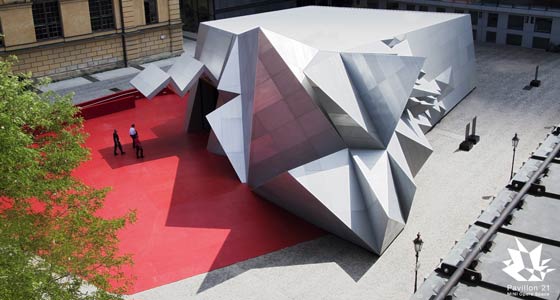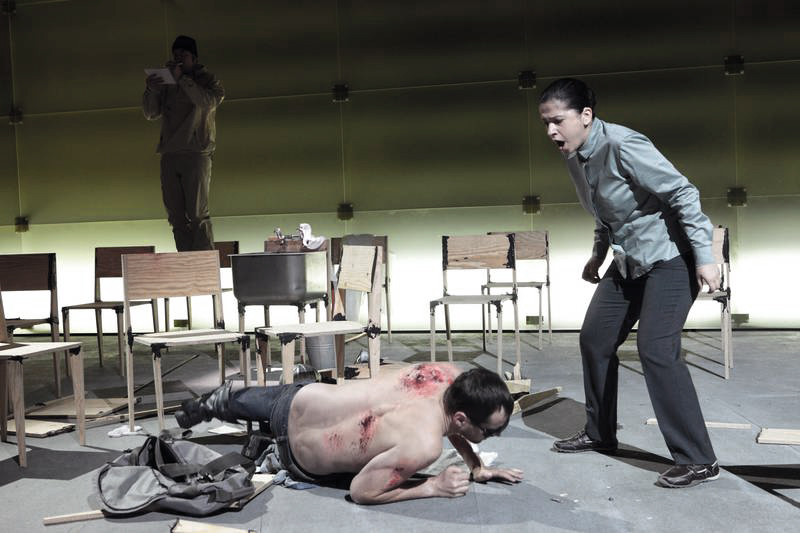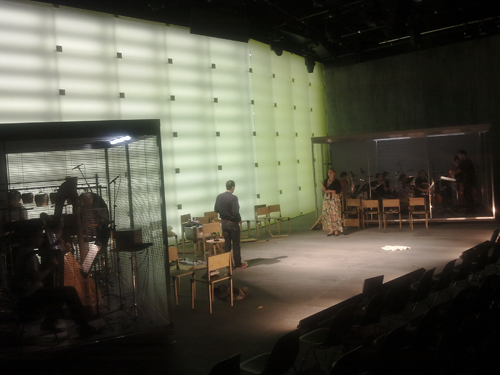06_2011
+++++++++++++++++++++++++++++++++++++++++++++++++++
Make No Noise is a commission from the Bayerische Staatsoper. It was premiered at the Bayerische Staatsoper inside the Pavillon 21 in Munich on June 28th, 2011.
The piece’s libretto is from Tom Holloway. It is inspired by the 2005 Isabel Coixet‘s movie The secret Life of Words. It tells the story of a young woman who is caring for a man seriously injured in a fire on an oil platform. She is almost deaf, and he bears the blame for the death of his best friend who died in the fire on the platform. Neither has any words for the events that have altered their lives abruptly. Both have found a bearable way of dealing with their respective pasts – silence. When they meet on the shutdown oil rig, they sense in their unique connection a way of being able to live with their traumas. Make No Noise is the story of a coming together, the beginning of a communication, a healing.
Hanna: Laura Tatulescu
Joseph: Holger Falk
Inge : Okka von der Damerau
Simon / Worker: Kevin Conners
Martin / Boss: Tareq Nazmi
Instrumental music: Miroslav Srnka
Ensemble : Ensemble Modern
Conductor: Christopher Ward
Libretto: Tom Holloway
Electronic music: Olivier Pasquet
Stage and costumes: Christof Hetzer
Sound director: Norbert Ommer
Production: Matthew Lutton
Marie Luise Maintz says both protagonists singing becomes the language that can show them a utopian way. “The question, “Why do we sing in opera?” is answered through it: in order to gain a new means of articulating life through singing. The singing develops in the course of the opera – from the impossibility of producing vocal sounds, up to a free expression. This is also the key to my treatment of the voices: I allow them to go through several stages of “voice producing”. It also means that the voices are not limited to a specific contemporary vocal technique. On the contrary, the movement through different techniques becomes the dramatic basis of the treatment of the voices. Contrary to this, the ensemble music demonstrates everything that this communication prevents. That is to say, the ensemble performs a contrary development to the long-developing line of the vocal parts: a long decrescendo. To this, a third, electronic layer is added: it represents a closed world of the title heroine which nobody else may enter… Yet perhaps, hopefully, the audience.”
Hanna does not hear properly and uses a hearing aid device. She sometimes removes it so she can protect herself, or listen to herself. Dramaturgy for these specific moments like the opening of the opera is very specific. The acoustic world should be completely different and this is something the electronic can do. Also, the ensemble plays inside two boxes which can be closed by jalousie windows. Those windows are supposed to change the acoustics.
The dramaturgic role is rather major for composed parts of pure electronic. Pure electronic stands for moments where there is no overlap between the acoustic part and the electronic one. Also, the stage design and, probably even more, the architecture of the building are crucial. With the stage, the electronic makes the connection between the piece and the outside world; the audience and the building. This fact is rather interesting since its use is somehow figurative or symbolic by showing the blurriness of some abstract deaf world when Hanna removes her hearing aid device.
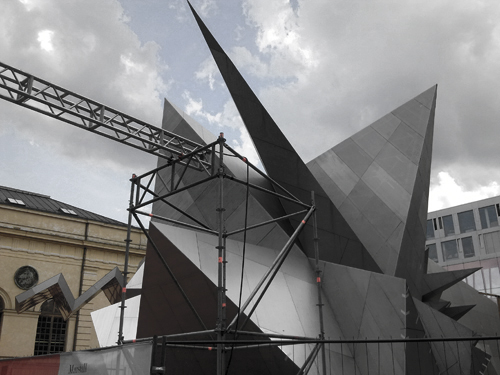 Bayerische Staatsoper Pavilion 21 _2011 Bayerische Staatsoper Pavilion 21 _2011 |
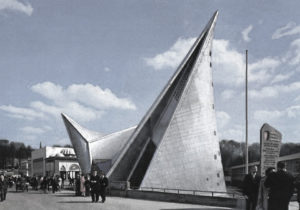 Bruxelles world’s fair exhibition Philips Pavilion _1958 Bruxelles world’s fair exhibition Philips Pavilion _1958 |
It is given an important role for spatialization by envelope. In the early times of the project, I thought about Iannis Xenakis and Le Corbusier Philips Pavilion. The singing voice develops in the course of the opera. It goes from the impossibility of producing vocal sounds up to a free expression. Therefore, electronic timbres evolve during the piece; the opening consists of a very electronic-orientated aesthetics and ends with an almost acoustic sound quality that eventually overlaps with the strings. No preliminary recording was done and all sounds are purely synthetic. Formant synthesis fit pitches with real voices. Physical modeling and various convolved noises make connections between noise and strings. Maybe influences would come from Alva Noto‘s hidden poly-rhythmic glitch music to Steve Reich phases games, the overall structure is rather simple but efficient. It makes interesting contrasts and connections with the ensemble.
